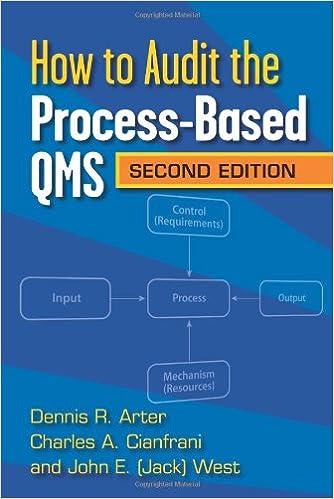Question
Your production manager just came into your office with a worried look. We are missing a lot of delivery commitments while we are repairing that
Your production manager just came into your office with a worried look. We are missing a lot of delivery commitments while we are repairing that old dust collector. If we want to keep our factory running smoothly, we have to replace it. Your schedule is hectic today, but you know that factory productivity is plummeting and tempers have grown short over the distraction of an unreliable piece of equipment. Its clear that you need a replacement right away. You call two industrial equipment dealers and ask for quotes on a new dust collection system. Your only requirement is that, since you dont have the cash on hand to make a major purchase anytime soon, you want proposals that allow you to spread the payments over time. Both dealers promise to have bids to you in a week. As you read the proposals the following week, you are not sure what to do. Yoder Equipment is offering a 4-year lease on the DuraClean 100. The lease is for $14,175 annually payable in arrears, totaling $56,700 over the four years. All major maintenance is covered by the lease; but you estimate that there will be $1,200 annually of incidental maintenance items that are not covered by the lease that you will pay. Zephyr Air Handling Corporations proposal is different: They are offering to sell a DuraClean 100 to you outright for $54,500. But, knowing that you cant pay for it all at once, Zephyr offers to finance the entire purchase price at 8.0% interest over four years, with equal annual principal installment payments of $13,625 in arrears plus interest. They also quote a separate major maintenance contract of $995 per year for the first year, with an annual renewal clause that includes a 2% annual fee increase. No one at your company has the time or skill to do heavy maintenance of the dust collector, so you know you will have to purchase the add-on maintenance contract. You further estimate that non-covered incidental maintenance will cost $500 annually. You decide to gather a few facts and then analyze both proposals to find the one that has the lower cost. You know that many of the expenses you will pay are tax deductible, meaning that you can reduce the income tax you would have paid otherwise because of expenses associated with equipment use. You decide to discount both proposals by the opportunity cost of funds, which you conclude is the after-tax cost of the proposed 8.0% loan. Since your tax rate is 35%, this means your discount rate is 5.2%. (Your profit plan for the next four years is about $200,000 annually, so you are certain that you will be able to take full advantage of any deductions you may make.) Your experience tells you that constant usage will lead to wear and tear sufficient that you will not want the dust collector after four years. If you choose the lease, the lessor will simply take the forklift back at the end of the 4-year lease. If you own the dust collector, you figure that you can sell it for parts to a smaller workshop at the end of 4 years for 10% of its original purchase price. Your accounting manager lets you know that, if you own the dust collector, a special tax incentive program will allow you to depreciate it for tax purposes in a straight line over 3 years (meaning one-third of the purchase price for years 1-3). But if you sell the dust collector for more than its depreciated book value (which is your intention), you will have to pay a capital gains tax at that time of 20% of the difference between the sale price and the depreciated value. Just before you start your analysis, you make a few lists to help with this decision. One list is of non-cash charges that are nevertheless tax deductible. The next list is of balance sheet cash flows that have no tax impacts, like the t=0 purchase price outflow, the original loan (inflow) of $54,500, and the four annual principal repayment outflows. And you continue with a list of cash expenses that will reduce your taxable income, like the maintenance contract, the incidental upkeep, the 8.0% interest on the loan, and the lease payments. After you build a lease case and a buy case, you come to a decision.
Questions: A. Build a 4-year pro forma cash flow statement for the lease case and determine its NPV.
B. Build a 4-year pro forma cash flow statement for the buy case and determine its NPV.
C. Which will you choose? What salvage value (to the nearest whole % of original purchase price) makes you indifferent between the two cases?
Modeling Notes: Assume all cash flows occur at the end of each relevant period (except the original loan and the dust collection system purchase price, which occur at t=0). Assume interest is paid on the preceding loan balance, and that you then remit both the principal and interest at the same time (year-end). For example, your first (t=1) principal payment will be one-fourth of the loan amount; and your t=1 interest payment will be 8.0% times the previous balance, in this case, $54,500; the following year, the interest will be on the lower loan balance.
Step by Step Solution
There are 3 Steps involved in it
Step: 1

Get Instant Access to Expert-Tailored Solutions
See step-by-step solutions with expert insights and AI powered tools for academic success
Step: 2

Step: 3

Ace Your Homework with AI
Get the answers you need in no time with our AI-driven, step-by-step assistance
Get Started


